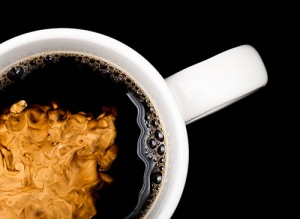Leaky gut could be a cause for the multiple allergies and sensitivities that could in turn result in an autoimmune disease. So what is leaky gut?
Leaky gut is a condition in which the intestine is allowing passage into the bloodstream of incompletely digested food. The immune system then reacts to those food particles, resulting in a cascade of allergies and sensitivities. These multiple allergies and sensitivities are the hallmark of a leaky gut. If you have multiple food allergies and sensitivities, it’s a good bet that your gut is leaky. Way back in the 80s, I did an IgE test for food allergies, and the only thing that came back negative was walnuts. In other words, the only item in the test that I wasn’t allergic to was walnuts. The doctor said that I probably had not been eating them. Can you imagine the elimination diet required to treat that? Trust me, you don’t want to. The doctor put me on some obscure formula that was something like hot wheat cereal (but of course it wasn’t wheat), and that was all I could eat while I healed. Yes, been there, done that.
There are two causes of leaky gut that I know of. The first and the easiest to correct is a gluten problem. I’ve seen varying descriptions of the mechanism for how it works, but the upshot is the same. To correct the problem, you must eliminate all sources of gluten from the diet. This is principally wheat, rye, and barley, but your practitioner may suggest elimination of all grains.
The other cause is overgrowth of harmful microbes in the gut that can cause damage to the intestine. Antibiotic use or poor diet can set this in motion. To rebalance your intestinal flora, you need to starve the bad little critters. This requires elimination of all sugar, fruit, grains, and other starches. Since those buggers can also thrive on artificial sweeteners, that means completely forgoing sweets. The resulting diet is composed mainly of meat and non-starchy vegetables. Along with that, you need to encourage the increase of beneficial gut microbes. This can be done by consuming probiotic supplements, yogurt, and fermented vegetable products such as kimchee and fermented sauerkraut. The fermenting process should eliminate the goitrogens, so one need not be so concerned about consuming the cabbage products.
Serious solutions for serious problems. This is an issue best solved with the help of your health practitioner.
References:
Andrew Weil, M.D. What is Leaky Gut?
PubMed
 I have found lately that putting cream or unsalted butter in my coffee or tea can really shut down my appetite, so much so that I have decided to reduce the butter I use with my morning egg.
I have found lately that putting cream or unsalted butter in my coffee or tea can really shut down my appetite, so much so that I have decided to reduce the butter I use with my morning egg.